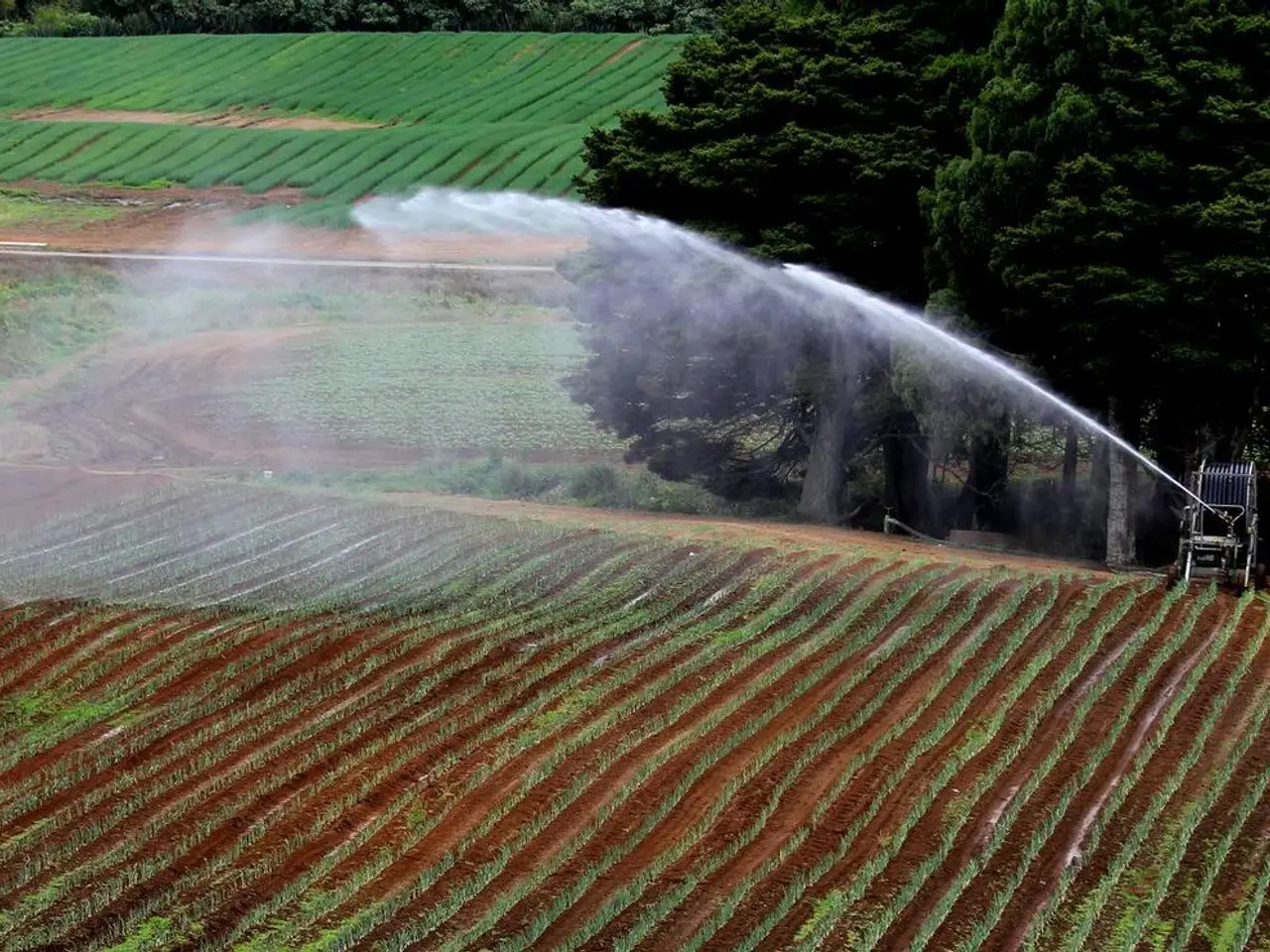Avoiding Irrigation System Failures: Preventive Measures and Tips
In the realm of gardening and agriculture, maintaining an efficient irrigation system is crucial for ensuring uniform water distribution, reducing water waste, and preventing costly breakdowns. Here's a comprehensive guide on how to perform and schedule routine maintenance for irrigation systems.
**1. Schedule Regular Inspections and Tests**
Regular inspections and tests play a pivotal role in identifying and addressing issues early. Conduct a monthly examination while the system is in use to spot broken, misaligned, or clogged sprinkler heads. At the beginning of each irrigation season, carry out a full system test zone-by-zone, checking for sprinkler heads that do not pop up or are misdirected, clogging or dirt buildup, leaks or water pooling near heads or valves, dead zones where irrigation coverage is insufficient, controller and sensor functionality, and backup battery replacement [1][2].
**2. Flush the System Periodically**
Before starting the season or after any idle periods, flush sprinklers and drip emitters by removing heads or emitters and letting water run through pipes to clear debris. Replace the heads or emitters and verify proper function [1].
**3. Adjust Watering Schedules Seasonally**
Adjust irrigation controller schedules to match local weather conditions. Increase watering frequency in hot, dry periods to meet higher evapotranspiration rates, schedule watering times in the early morning to minimise water loss from heat and wind, and tailor runtimes based on microclimates such as sun exposure, soil type, and slope [2].
**4. Perform Preventive Maintenance Tasks**
Use a checklist of weekly, monthly, and annual tasks that includes checking the irrigation controller, valves, pumps, pipes, sprinkler/riser heights, and moving parts. Conduct routine inspections of equipment like pumps and controllers to identify wear or damage in advance and reduce downtime [3]. Maintain logs or templates of irrigation systems specifications and maintenance records for staff reference and future benchmarking [3].
**5. Winterize the System (for Cold Climates)**
Turn off the main water supply and set the controller to "rain" or "off" mode. Open all valves to release water pressure. Drain the system completely using drain valves or blowing out the system with compressed air to prevent freezing damage [1].
**6. General Tips to Prevent Breakdown**
Replace worn or broken parts promptly, keep filters clean, verify and replace backup batteries in controllers yearly, train staff on routine maintenance procedures and documentation, and consider professional irrigation checks or system blow-outs periodically, especially before winter [1][4].
By integrating these maintenance and scheduling practices, irrigation systems can operate efficiently, reduce water waste, and prevent costly breakdowns during critical growing periods [1][2][3]. A well-maintained irrigation system doesn't need miracles, just the right care. Regular maintenance provides plants with the water they actually need and helps in preventing damage and extending the system's useful life.
[1] Irrigation Association: Best Management Practices for Irrigation Systems [2] The University of Arizona Cooperative Extension: Irrigation Scheduling [3] The Toro Company: Irrigation System Maintenance Guide [4] The National Association of Landscape Professionals: Irrigation Best Management Practices for Landscape Professionals
- To ensure an efficient home-and-garden lifestyle, it's essential to perform regular maintenance on irrigation systems, which includes flushing the system periodically and adjusting watering schedules seasonally to minimize water waste and prevent costly breakdowns.
- In maintainering a home-improvement project, homeowners can enhance their home-and-garden lifestyle by scheduling regular inspections and tests to identify early issues with their irrigation system, such as broken sprinkler heads or leaks, and addresses them promptly.








